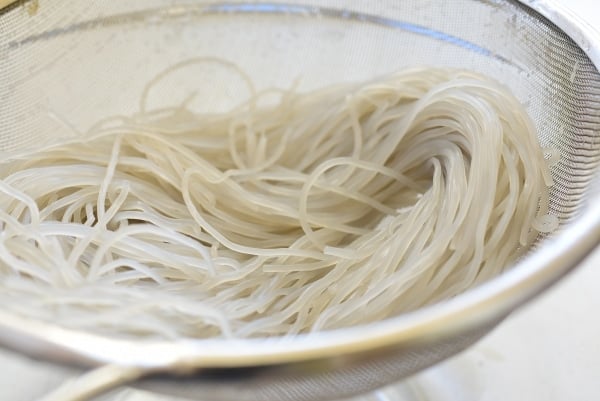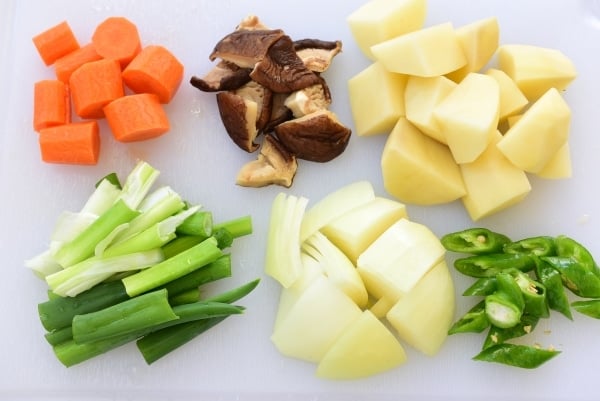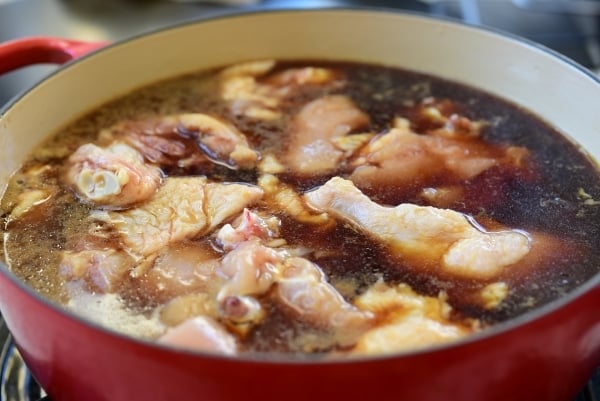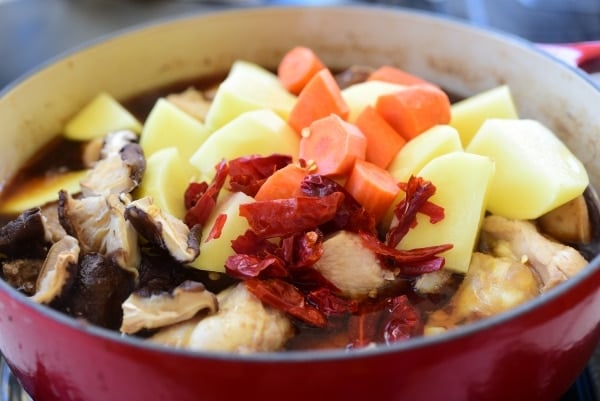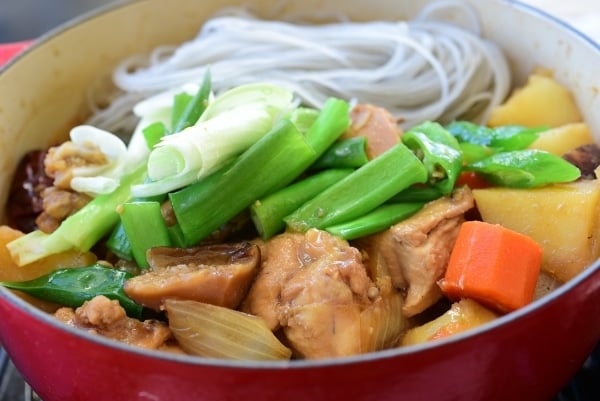Jjimdak - Korean Braised chicken Recipe
Jjim Dak, also known as Jjimdak (찜닭), is a popular Korean dish originating from the city of Andong. It is a savory and slightly sweet braised chicken dish that features a rich combination of flavors and textures. The name "jjim dak" translates to "braised chicken" in Korean, with "jjim" meaning "braised" or "steamed" and "dak" meaning "chicken."
Origins and History
Jjim Dak has its roots in the traditional Korean cooking method of braising meat and vegetables. It became particularly famous in the Andong region, where it evolved into its current form in the 1980s. It was initially a simple dish made to feed hungry diners with hearty portions of chicken and vegetables in a flavorful sauce. Over time, it has grown in popularity and is now enjoyed across Korea and beyond.
Key Ingredients
- Chicken: Typically, a whole chicken cut into pieces or specific parts like thighs and drumsticks are used. The chicken is marinated to enhance its flavor.
- Vegetables: Common vegetables include onions, carrots, potatoes, sweet potatoes, and shiitake mushrooms. These add texture and nutritional value to the dish.
- Glass Noodles (Dangmyeon): These are made from sweet potato starch and have a chewy texture. They absorb the sauce well, making them a delicious addition.
- Sauce: The sauce is a blend of soy sauce, sugar, garlic, ginger, rice wine (mirin), and sometimes oyster sauce. This creates a balance of savory, sweet, and umami flavors.
- Seasonings: Sesame oil and sesame seeds are often used to finish the dish, adding a nutty flavor and aroma.
Cooking Method
Jjim Dak is prepared by first marinating the chicken, which allows it to absorb the flavors of the marinade. The chicken is then braised with vegetables in a flavorful sauce until both the meat and vegetables are tender. The addition of glass noodles towards the end of cooking ensures they are soft and flavorful without becoming too mushy. The final dish is garnished with green onions, sesame seeds, and sometimes sliced chili peppers for a bit of heat.
Flavor Profile
The dish is known for its rich, deep flavors. The soy sauce provides a savory base, while sugar and mirin add sweetness. Garlic and ginger contribute aromatic notes, and the sesame oil adds a hint of nuttiness. The combination of these ingredients creates a harmonious and comforting dish.
Serving Suggestions
Jjim Dak is typically served hot, often accompanied by steamed rice to soak up the delicious sauce. It can be enjoyed as a main dish during lunch or dinner. It's also common to serve it family-style, allowing everyone to share from a large communal pot, which makes it a great dish for gatherings and special occasions.
Nutritional Information
Jjim Dak is a nutritious dish, providing a good balance of protein, carbohydrates, and vegetables. The chicken offers high-quality protein, while the vegetables supply essential vitamins and minerals. The glass noodles add carbohydrates for energy. The dish can be adjusted to be more or less healthy depending on the amount of sugar and oil used.
Variations
There are several variations of Jjim Dak, depending on regional preferences and available ingredients. Some variations might include additional vegetables like bell peppers or spinach. Others might adjust the level of sweetness or spiciness by adding more or less sugar and chili peppers. Some modern versions might incorporate ingredients like cheese for a fusion twist.
Jjim Dak is a beloved Korean dish that showcases the richness of Korean culinary traditions. Its comforting flavors and hearty ingredients make it a favorite among many, both in Korea and around the world. Whether enjoyed as a weeknight meal or a special occasion dish, Jjim Dak is sure to satisfy.





